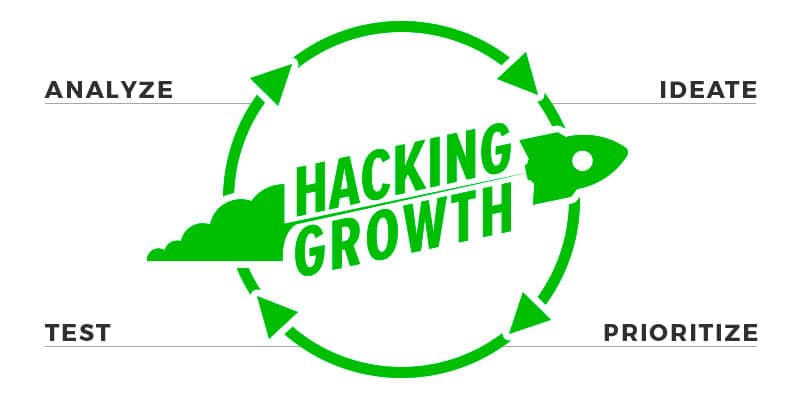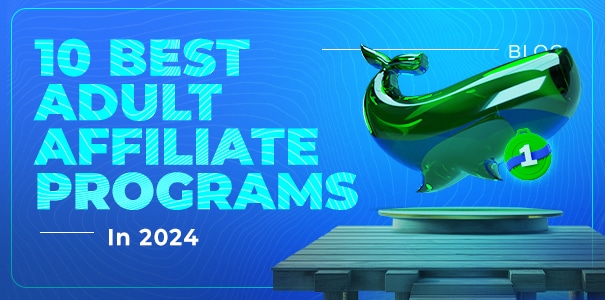Growth Hacking: You might have heard this buzzword on more than one occasion, including others like growth marketing, lean startups, hacking marketing, and so on...
However, even though this concept has been written about a fair amount over the past decade, few affiliate marketers have incorporated the philosophy behind it to their overall strategies.
That’s why today, we’ll take a deeper look at Growth Hacking and why it’s essential to understand all of its components for ultimate success!
The Origins of the Growth Hacking Approach
It all started with Sean Ellis coining the term “growth hacker” in 2010. The entrepreneur called for a rise of new marketers focused on driving growth and optimization.
Somewhat a distant cousin of the Lean Startup method from Eric Ries, the growth hacking loop begins with the formation of an idea and comes full circle with qualitative analysis.

1 - IDEATE: Form a Hypothesis
Before launching any kind of experiment, a growth hacker (and his or her team) should assess things relating to one’s website or product offering. One objective of this operation is to pinpoint and find any potential growth levers for you to expand on and shift your focus toward.
To help with the brainstorming, some might ask questions that relate to your users’ overall behavior — like what the ideal user behavior would look like if you had to really sum it up? Also, try to discover any and all reasons for why users might abandon your site or service. This process can be accomplished using personas.
Since you might have multiple ideas and theories, make sure to keep notes of the experiments you’re aiming for, your hypothesis, and other relevant key metrics. These notes will be useful once you start your experiment — but this comes at Step 3.
2 - PRIORITIZE: Choose Your Battles
This second step is crucial to determining which test you should run first. The best way to proceed is to score each of your experiments on a scale of one to ten.
For each one, perhaps make a note or jot something down — again out of ten — of the impact expected, the confidence level of your hypothesis, and the ease of building and following through with the experiment.
From these numbers, you can generate an average ICE score. The higher the score, the easier it should be to implement and assess. These are the tests you should run first.
3 - TEST: Start the Experiment!
Now with the experiments being chosen, the fun part begins where you can now build and run them. Keep in mind, having anywhere between a 95% and 99% level of confidence will only help you go the distance and prevent you from wasting much time.
It also helps to have a continuous flow of traffic on your site (if you have control of this) throughout the entire testing phase.
Check out this useful tool that can help you assess your sample size so you can better reach those targets, and that greater level of confidence at the same time.
4 - ANALYZE: Check the Results
Back to stage 1 and some other analysis! Each variant of your test should be described in your test summary along with the hypothesis behind it. Add a screenshot or any media to your summary to help visualize what features have been changed. You might also want to add the test timing (start and end date) as well as sample sizes and statistical power.
Finally, find a way to display, purely from a visual perspective, the metrics tracked. If potential confounding elements have been founded, make it visible in your report. Your conclusion should be a win or a loss.
Extra Tips for a Successful Growth Marketing Strategy
Each experiment’s iteration should be ten or fourteen days long and should follow a culture known as High Tempo Testing. High Tempo Testing is one way to find additional growth in a way that’s easier to measure. However, before taking a stab at your own “growth hacking” tactics, one should ask oneself whether or not their site, service or offering is of high necessity from a user’s point of view.
Our Favorite Growth Hacking Tools
For A/B testing, Google Analytics Optimize tool from the Analytics Suite is a free and powerful tool. We also recommend a nifty tool called Zarget — this tool is perfect for heatmaps and A/B testing. In fact, this tool was made for effortless website optimization.
And finally, some excellent software by the name of Convert can help you achieve higher click-through-rates and more leads through their perfected error-proof testing and real-time reporting. This software works especially well with high-traffic volume sites!
On the project management side, there’s no shortage of tools devoted to this market either. The most famous being the GrowthHackers Projects — something they describe as the “single best system to focus your team on driving growth of your company's key success metric.” This one was developed by Sean Ellis himself. It helps marketers organize their experiments and ICE score them. It also serves as a knowledge base for your wins and losses.
Tactics Playbook
When assessing the conversion funnel as a whole, make sure to focus on what you can change and then identify key elements that weaken your sales potential.
If you’re new to optimization, start by segmenting your funnel in an AARRR model (Pirate Metrics).

- Acquisition: The customer journey always start with acquisition (SEO, Social Media, etc.).
- Activation: First impressions are everything. That first initial interaction with your site or product, on top of user engagement, matters more than most people realize. It’s key to what comes next...
- Retention: You’ll want these users (potential customers) to come back regularly and often.
- Referral: Once said user performs the specific action you wish them to take, having them then spread your site, service or company name word of mouth to friends and colleagues is an absolute plus.
- Revenue: If this whole process is successful, your revenue stream should be flush!
Follow each of these aforementioned steps and you might just see some positive results!
Here are some examples of what you can do:
- A/B test your squeeze pages by changing your CTA text and color.
- Personalize your ad campaigns for major events (Black Friday, Christmas) with special landing pages.
- Add an exit intent popup.
- Use the scarcity technique (limited-number, limited-time).
- Review your font hierarchy.
For hundreds of additional ideas, check out this complete playbook by Ladder.
How We Crak the Conversion Funnel
At CrakRevenue, we’ve been in a state of rapid growth for the last year alone. In fact, we even have a team dedicated to it. The basic idea is to improve all of our acquisition channels and take the products promoted to a whole new level.
From push notifications to chat bots and dynamic surveys, the growth team is moving with dozens of hack-ideas to help affiliates and advertisers earn more money! Therefore, don’t hesitate to reach out to us in the comments should you need guidance in your growth hacking strategy! :)



